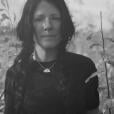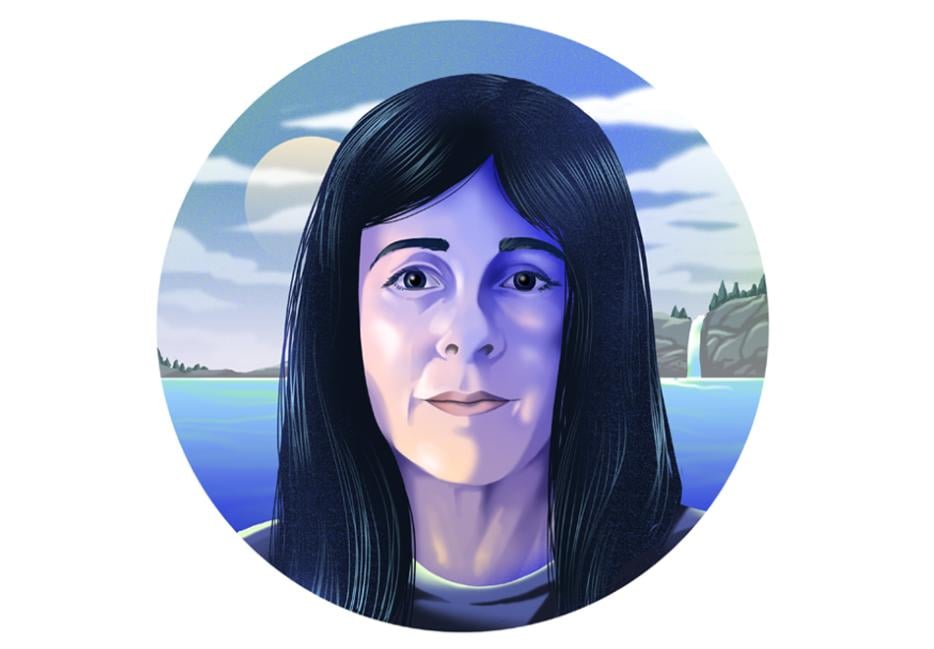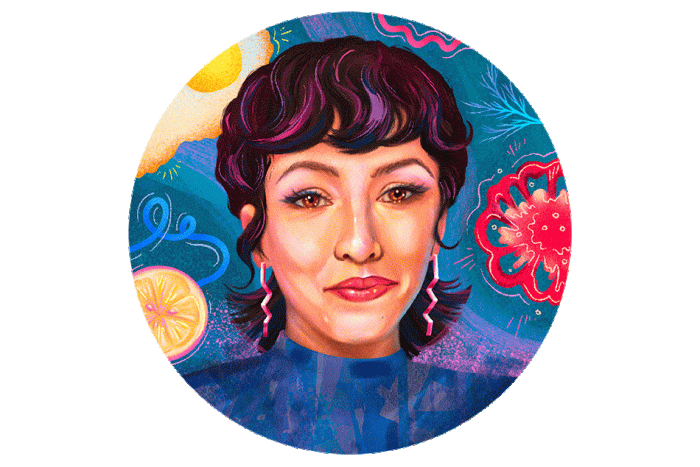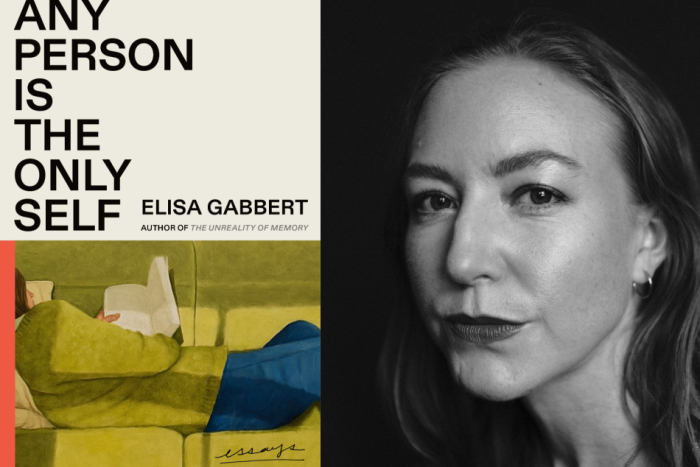Welcome to Bizarre Celebrations, a column about storytellers, craft, and everyday encounters with technology.
When it was still standing, the most haunted house in Vancouver did not look the part. Its design came straight out of the city’s 1986 aesthetic of faux marble, window block turrets, and beige optimism. The driveway was always empty, the gate always closed. In fact, in three years of living nearby, the only time I ever saw any action at the house was in October, when spooky walking tour groups assembled out front, gawking through the gate and taking pictures. Local fascination with the place continued after it was torn down in 2022 to make room for a housing development.
The neighbourhood was once middle-class fancy, with sprawling front yards and tree-lined boulevards. But by the time I moved there in 2013, most of these mini-estates were empty and waiting for the wrecking ball. These abandoned houses—with their sloped rooftops and dead-rat stench—were legitimately creepy, especially to those passing by at night. Staring into the gaping maw of what had once been a neighbour’s window brought an uncomfortable mix of wondering what (or who) was inside and remembering days when the satisfying answer to that question would have simply been a nuclear family.
I lived right across the street from the haunted house, in a dumpy old place the landlord wasn’t ready to sell to developers yet. This brought many excited questions from friends. Had I ever felt anything creepy? Seen anything weird? One night, a barefoot man showed up at the front door, saying he was a paranormal investigator. I slammed the door in his face, but a surprising number of well-shod strangers have offered up their own ghost stories over the years, as if living in proximity to the house has made me a medium. Haunting has always been a compelling source for stories—and maybe even more so now, as both the housing and the climate crises bring the question of where we live to the forefront.
A tenet of horror narrative theory is that the antagonist—who or whatever is constructed as evil—is a symbolic expression of current societal angst. As our collective fears shift, so do the baddies that stand in for them. Yet somehow, for over two decades, humanoid antagonists like vampires and zombies have ruled popular horror. The vampiric nature of social mores and expectations. The more straightforward fear of a global pandemic. I could write three columns about their metaphorical possibilities, but you already know—they’ve been done to death.
That’s not to say that hauntings have been ignored. One of the most intense and divisive horror films of 2022, Skinamarink, was composed almost entirely of atmospheric shots of a house’s interior, with two children trapped in a nightmarish limbo: no parents, and the doors and windows have vanished. While there are hints of a demonic presence, for the most part, the house itself—and the fact that there is nowhere to hide within it—is the source of terror. A crawling pace and grainy texture lend a nightmarish tint to the experience, the camera lingering on shadows and creepy childhood toys and making the hundred-minute run time feel excruciatingly long. Some viewers loved it, but a glance at Rotten Tomatoes reveals hundreds of furious complaints that the film was “boring.” Could it be that removing a humanoid threat and bringing a fear of the unknown right into our living rooms is so unsettling that viewers subconsciously disengage from the narrative, choosing outrage instead? Maybe. With its forced intimacy, Skinamarink is a confrontational, if abstract, exploration of what scares us. A long journey through a series of passive but ominous threats. Not unlike the nightmarish limbo of climate change.
In recent literature, haunting has expanded to fully capture modern anxieties in a more concrete (but equally unsettling) way. One of my favourites, The Marigold by Andrew F. Sullivan, eschews traditional ghosts for a biological antagonist—a fungus-like growth that lives underground, and invades a condo development in a near-future Toronto. The Wet, as it’s called, comes from the toxic soup of pollution below the city and seems intent on claiming everything above ground, including humans. The baddie in this scenario is entirely of our own making: avarice and urban sprawl come to bite us in the ass. Like with Skinamarink, there is nowhere to hide—home offers no safety since the Wet is everywhere. But in The Marigold, the threat is direct, named, and visibly horrific. The Wet’s biological attack on Toronto is an unlivable-city metaphor taken to its most violent extreme. Humans are both the Wet’s creators and its victims. Sullivan clearly points to an aspect of life that we are constantly reminded of lately: that the core of so many social systems we’ve taken for granted is, in fact, rotten.
The past ten years have seen socio-political reckonings come to a head all around us. In 2016, the Standing Rock Sioux (Dakota and Lakota) and thousands of land and water protectors withstood attack dogs and water cannons in a fight against the Dakota Access Pipeline expansion, which threatened water, burial grounds, and sacred sites on their land. In 2022, truckers and thousands of their supporters descended on Ottawa and had a horn-honking street party to protest COVID-19 safety measures. Humanity isn’t always on point with our outrage, but increasingly we are gathering and speaking out, with hopes of overturning longstanding power dynamics. The word unprecedented is overused to describe our current context, but it is apt. In her article “On narrative, reckoning and the calculus of living and dying,” Dionne Brand begins by addressing the pandemic but ends by summing up, well, everything: “Everything is up in the air, all narratives for the moment have been blown open — the statues are falling — all the metrics are off, if only briefly. To paraphrase Trouillot, we want ‘a life that no narrative could provide, even the best fiction.’ The reckoning might be now.”
Brand was right three years ago, when this article was published, and she’s still right now. Capitalism is sliding into its endgame—whatever that looks like—and this transition is not comfortable to live through. I am not going to suggest that haunted-house stories are the solution to this reckoning that Brand identifies, but then fiction isn’t built to provide solutions. It holds a mirror up to the times we’re living in, and gives us an opportunity to make sense of powerful emotions like loss, grief, and fear. It also provokes, and gets the blood pumping.
One of the most thematically successful haunted-house films of all time, Poltergeist (1982), was remade in 2015 because its “urban sprawl as a site of horror” concept has been made evergreen by North American capitalism. In the film, a young family moves to a planned community in California, where they experience a series of strange events that escalates into a nightmare. Unbeknownst to the new residents, the community’s greedy developers had built over a burial site, moving the gravestones but leaving the bodies. While the family members themselves aren’t responsible for this atrocity, their presence on the land lends them some complicity as they are victimized by angry ghosts. This narrative continues today.
Poltergeist finishes with the family being driven from their property in a thunderstorm by skeletons who rise from the ground beneath them. Those final moments, absurd as they sound now, held me riveted to the screen in the moment, as I hoped desperately for a happy ending.
The meeting of socio-political messaging and pure, unsettling adrenaline is where I see haunting narratives really coming of age. Hauntings invade the spaces we’re supposed to feel safe in. With this in mind, it seems to me that the time for hauntings—which suggest that personal comfort is impossible when the systems that provide that comfort are rotten to the core—is now.






